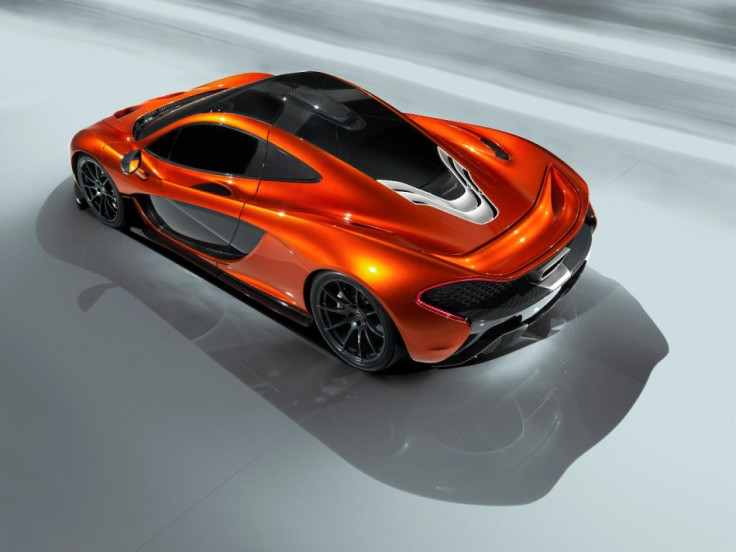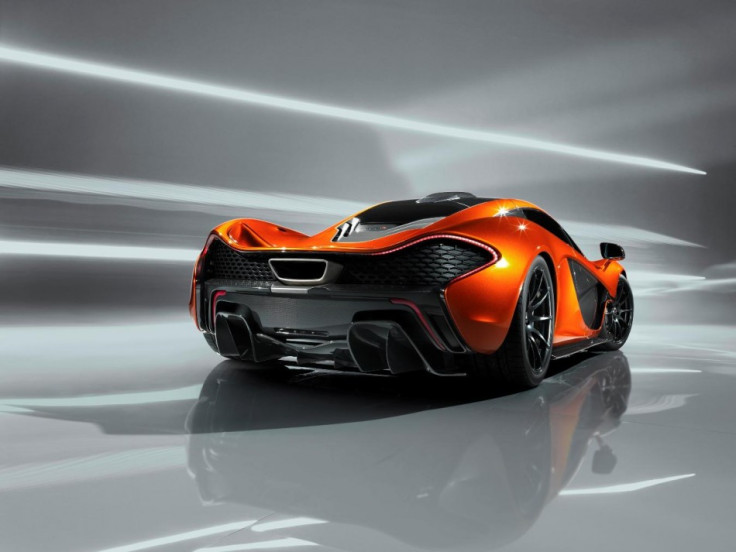McLaren P1 Gets Worldwide Debut at Paris Motor Show
The McLaren P1 supercar made its worldwide debut today at the Paris motor show, where it was announced by company boss Ron Dennis that the flagship car will be the "ultimate supercar".

It was McLaren's first ever appearance at an international motor show and even Dennis admitted to the packed press conference that he was nervous about showing off the P1 in public for the first time.
Although images of the new supercar - which will join the MP4-12C and 12C Spider roadcars next year - were published earlier this month, the car's Paris debut was the first time it was seen it public.
Steering clear of revealing a price or many performance figures - the show car doesn't even have an interior yet - McLaren did reveal that the P1 will have a power-to-weight ratio of over 600bhp per tonne, which could equal a total power output of more than 700bhp.
Woking-based McLaren claimed that the P1 will generate a staggering 600kg of downforce at speeds "well below" the car's maximum velocity - a figure we expect to be in excess of 220mph.

That 600kg of downforce is generated by the design of the P1's doors, the front splitter and huge, adjustable rear wing, which all work together to push the car into the road with five times the force of McLaren's current car, the MP4-12C.
We say adjustable, because the rear wing can be used to generate downforce at speed, be used as an airbrake, and even be stalled to reduce downforce - exactly how the DRS system works on a Formula One car.
In addition to the adjustable 'active' rear wing, the McLaren P1's aerodynamic performance is optimised using two flaps mounted under the body ahead of the front wheels. These are also actively controlled, and change angle automatically to optimise performance, boosting downforce and aero efficiency, increasing both speed and driver confidence. The flaps operate through a range of 0-60 degrees.

The rear wing and front flaps work together to boost handling, braking and straight line performance. The active aerodynamics ensures totally consistent handling and driving behavior.
A car that will be as at home on the commute to work as it will on the track, the P1 has been designed to switch between a "proper racing car" and a car that can be driven home in "great comfort and refinement" at the touch of a button.
"The McLaren P1 will be the result of 50 years of racing and road car heritage," Dennis said. "Twenty years ago we raised the supercar performance bar with the McLaren F1 and our goal with the McLaren P1 is to redefine it once again."

"Our aim is not necessarily to be the fastest in absolute top speed but to be the quickest and most rewarding series production road car on a circuit", said McLaren Automotive Managing Director Antony Sheriff.
"It is the true test of a supercar's all round ability and a much more important technical statement. Our goal is to make the McLaren P1 the most exciting, most capable, most technologically advanced and most dynamically accomplished supercar ever made."
There is no word yet on what McLaren will charge for the P1, but we suspect it will not come cheap and will no doubt go head-to-head with Ferrari's Enzo replacement - due to be announced next year - and the hybrid Porsche 918.
With three flagship supercars from three of the biggest names in the business all set to arrive in 2013 and with prices expected to be approaching the £1m mark, the next 12 months are set to be quite something.
McLaren will disclose more about the P1 at the Geneva motor show in January 2013 and the car will go on sale in the spring.
© Copyright IBTimes 2025. All rights reserved.






















